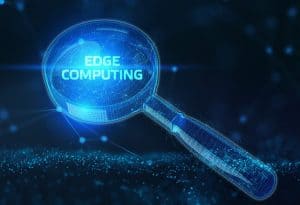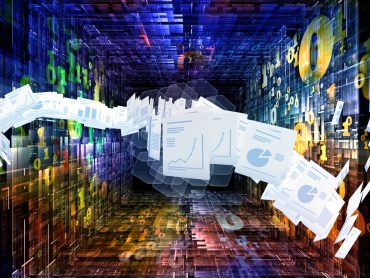
CIOs are realizing that the edge is the key to unleashing innovative opportunities.
Edge computing isn’t just the latest sizzling trend creating buzz among analysts and conference speakers. It is becoming a primary mode of information delivery and digital transformation. Among three in four enterprises, edge has become the norm.
That’s the conclusion of a recent special report released by Intel, which finds that 72% of IT executives employing edge to boost innovation. “Businesses can no longer afford to ignore the edge,” the report’s author, Inma Martinez, states. “Reliance on data is soaring — trillions of minutes are processed on video platforms per month. Businesses need this data readily available to drive real-time innovation.” Edge computing can play a critical role in driving both efficiencies and growth. This is also tied to technologies such as artificial intelligence and 5G communications.
Edge computing is already bringing digital services to the next frontier, “working in synergy with critical technologies like AI and 5G,” the report states. Among Intel customers. For example, “there are over 24,000 edge deployments generating real business value and helping companies grow and innovate in the distributed intelligence era.”

CIOs are realizing that the edge is the key to unleashing innovative opportunities, Martinez states. “They are recognizing that analyzing real-time data nearer to the edge yields greater efficiencies and insights. While barriers to adoption remain – identifying clear use cases, security, lack of internal skills, and cost concerns – “this suggests that CIOs are beginning to understand the value of the edge. They recognize that the edge means working towards a future where data is no longer stored where it has no value. Instead, companies who adopt edge technologies can move, process, and extract value from this data in real time.”
See also: Center of Edge Computing and 5G
Companies that employ siloed approaches and do not embrace collaboration will fail to extract value from the edge. The report also points out. “In truth, 5G and edge technologies are inextricably linked. The rise of 5G is critical to the future of the edge – it is the promise of a world of new 5G-enabled use cases that makes investing in the next-generation network a smart financial decision.”
Every industry, as well as every company, has a unique business case that can be built around edge. Martinez cites the growth of edge across key sectors:
- Retail: “Data analyzed at the edge corrects massive amounts of inventory distortion while making supply chains and product development incredibly efficient,” the report states. “The edge provides retailers with real-time consumer behavior analysis, empowering them to deliver more personalized experiences.”
- Industrial: AI-based robotics “are used to perform repetitive and potentially hazardous tasks with greater speed and accuracy than humans. Machine vision is also used to validate features and check for defects, helping to deliver the highest-quality product possible.”
- Healthcare: Edge computing “helps deliver a higher quality of care and clinical efficiency by enabling frequent patient monitoring and data collection, integration with electronic health records, and AI-powered patient data analysis. Deep-learning inference is used in image-based diagnostics to speed the detection of health issues and save lives.”
- Telecommunications: Edge is a huge part of telecommunications and network providers’ business models going forward, as well as improve internal efficiencies. “Driving network and operational efficiency, machine learning can help telecom operators increase network and operational efficiency to meet rising service level expectations while simultaneously reducing costs. With AI and analytics-based engines, operators gain the ability to intelligently manage 5G networks to achieve key network KPIs, network automation, energy savings, and operational flexibility to serve a wide variety of 5G and edge use cases.”







